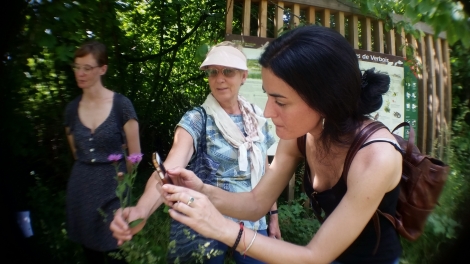
Mini BioBlitz at Teppes de Verbois Nature Reserve
The 2nd European Citizen Science Assn conference again brought together an eclectic mix of around 350 researchers, project/programme coordinators (and wannabes) from across the continent and beyond (UK, USA, Sth America, Asia, Africa, Australia and NZ). This post, the one hundredth on this site(!) highlights questions, considerations and research outputs presented that demonstrate how the field and methods of citizen science are actively being shaped and defined by different interests.
#ECSA2018 provided participants with diverse ways of learning and sharing information. Several keynotes were presented from European and US perspectives, followed by informal dialog/ roundtable sessions, speed and slightly longer talks, workshops and a brief poster session. This post will be one of many – the dynamic Muki Haklay has produced excellent posts summarising #ECSA2018 along with pre-and post- workshops. You can find my summary of the first ECSA conference in Berlin, 2016 here.
Setting the scene
#ECSA2018 began with an Expo showcasing diverse initiatives across health and environment sectors, including cit sci games (e.g., planktonportal), tools and project/data management platforms (Spotteron, iSpot, citsci.org), individual projects (Stadtwildtiere), multi-project initiatives (Doing-it-together Science) and labs (BioScope). From a New Zealand perspective, it’s always interesting looking at indicator species projects …like hedgehog spotting. While in decline in parts of Europe – spoiler alert! – they’re a pest species in NZ. Similarly, most mini BioBlitz flora spotted (featured earlier in the day after short boat trip up the Rhone) are simply weeds back home – vigorous climber Old man’s beard (Clematis vitalba) is targeted for active control. Native orchids however, were still a welcome sight for plant geek like myself.
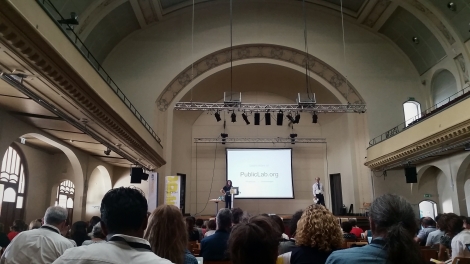
Grande Salle, Plainpalais, Geneva
#ECSA2018 – the citizen
The main event was situated in the spacious rooms of Geneva’s Plainpalais, with formal welcomes given by Katrin Vohland (ECSA) and Matthias Ammann (Science et cite). The first keynote, historian Bruno Strasser (University of Geneva) began with how authorities claimed outfall from Chernobyl would dissipate to the north, thus not affecting parts of western Europe (later proved incorrect). Opening speaker for the afternoon session, Shannon Dosemagen (Public Lab) revealed similar top down public control efforts – authorities actively preventing information gathering in the aftermath of the Deep Horizon Oil Spill. This event served as a catalyst for defining her mission: empower communities to take action by facilitating them to collect their own data. This reinforced the meta-theme of dominating #ECSA2018 – effectively designed initiatives can result in significant outcomes for communities and shift power balances from top down to a more equitable and reciprocal focus.
There wasn’t always agreement between presenters. Steffen Fritz (International Institute for Applied Systems Analysis) discussed the threats of mainstreaming: populism, anti-science and denialism emphasizing the need to ‘Reach out to frustrated people who are unhappy with the current system’. In contrast, the keynote for the following morning, philosophically-minded physicist Lionel Larque (ALLISS) disputed the existence of anti-science, instead describing civic dissatisfaction as a ‘criticism of science’, and one that institutions were ill-equipped to handle.
The language of citizen science
The term ‘citizen science’ itself has always been debated: language is inextricably influenced by historical, cultural and geographical factors. This was highlighted throughout #ECSA2018 – in parts of the US, the word community has replaced citizen (Lila Higgins, Natural History Museum of Los Angeles, and Shannon Dosemagen, Public Labs) in direct response to (unwelcome) changes in the political landscape. Dosemagen also shies away from ‘end user’ and ‘participant’. The deep consideration for language helps make Public Lab (co-founded by Dosemagen) strong. At the same time, the culture of relationship building and self-reflection (i.e. examining ‘who we are’) is nurtured to avoid imbalances in hierarchy, maintain clarity of vision and avoid the occurrence of ‘rot from inside’.
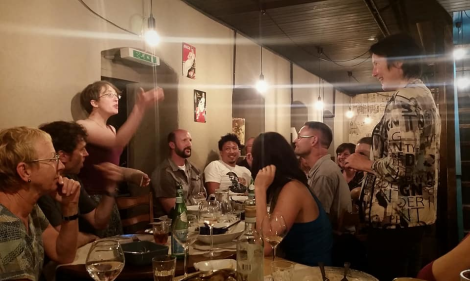
Networking (and imbibing) over an informal pre-conference dinner
A typology for contributory citizen science
What constitutes citizen/community science is flexible. Strasser’s typology centred primarily on contributory methods: providing computing power; analysers of cit sci data; collecting data through sensors, self-reporting (people providing data about their bodies for others to use); makers (cit sci equipment/toll manufacture). This differs markedly from NZ where a significant portion of citizen science is grassroots, participatory and collaborative.
Strasser estimated 10 million people have signed up for contributory projects since 1995, c 5.6 mil providing computing power, 1.8 mil serving as sensors and 1.7 mil as analysers – around 200,000 people monthly being involved in citizen science. Steffen Fritz, the second keynote, mentioned that 1bn people use Facebook monthly, underscoring how few people are really involved in citizen science when placed within a broader societal context.
Strasser reminded us that although the Internet and widely available personal technology have accelerated citizen science, major science projects relying on public participation still took place in the predigital era. These include the annual Audubon Christmas Bird Count and the 1950s Operation Moonwatch
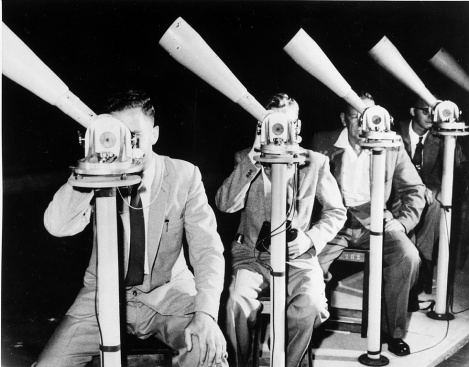
Possibly the largest single scientific undertaking in history: amateur astronomers and others citizens helped professional scientists spot the first artificial satellites.
A brief history
According to Strasser, there were no ‘professional’ scientists in the 18th and early 19th C – diverse people collected information and specimens to enhance general knowledge, as a hobby and for private collections (as Wallace did to fund his personal research).
The gradual professionalisation of science in the 19th C has had lasting implications, creating a dichotomy between amateurs and professionals. The rise of experimentation further situated science in labs (think Frankenstein). With labs generally closed to public, the scientist emerged as an expert figure, underscored by the rise of popular science magazines. These typically used the deficit model to communicate science, for Strasser a low point in the relationship between science and society. However, he remained optimistic with acknowledgement growing that science and the public cannot be kept apart, and that they need to understand each other.
Shifting power relations
For this to occur, there needs to be a shift from the top-down relationship between science and public. Scientists need to address their civic responsibilities by ‘talking to the people’ and shaping their research around public need. This was iterated by Shannon Dosemagen and was a strong theme in last year’s US Citizen Science Assn conference (blog post here). At the same time, Strasser also reminded us that we need to think more critically about politics, the purpose of participation and who benefits (or profits):
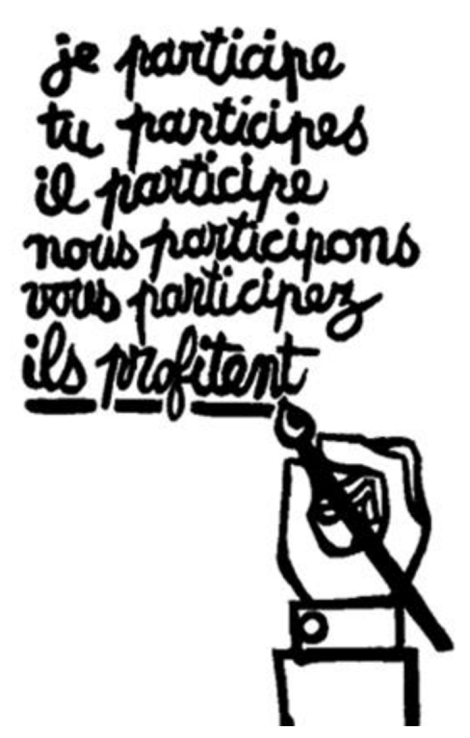
I participate, you participate, he participates, we participate – they profit (see Arnstein 1969 p216)
Mainstreaming citizen science
In his keynote on mainstreaming citizen science, Steffen Fritz emphasized a growing disconnect with 80% of people expected to live in cities by 2050. The goal of Citizen Observatories is to strengthen the connection with the environment while supporting communities to collect data to meet their needs. Fritz warned that industries are increasingly feeling threatened by citizen science strategies for escalating citizen science initiatives. A recent critique points to citizen science producing shoddy data while a quantitative review of initiatives revealed that 70% produced data that was ‘good enough’ to be used.
Public Lab and participatory mapping
Public Lab started off as grassroots mapping and an experiment in collaboration between web developers and designers, educators, scientists and community organisers. Dosemagen explained how the Lab gained legs from the media backout imposed by Deep Horizon oil spill. The spill and aftermath represented another ‘failure in government systems that were supposed to be protecting people’. With people viewed as being part of the solution, this was a time to rethink science and focus on more human-centred action. Simple analog camera technology attached to balloons enabled 250 people to take over 100,000 aerial images, creating a narrative of spill effects from the perspective of residents. The timing was right: 2010 –11 saw the rise with community mapping, rapid experimentation, crowdsourcing, open data and crisis mapping supported by funding for experimental initiatives.
Learnings from Public Lab
- Engage people as researchers not as subjects and focus on local concerns
- Enable innovation – tech users should not be bound to the developers’ design
- Let images communicate complexity
- Build openness and accountability and maintain public data archives
- Create collaborative workflows
- Mainstream true accountability – enable access to metadata and protect openness with viral licensing (CC, GNU, CERN open hardware)
Science and society policy
In discussing the origin of science and society-based policy, Lionel Larque (ALLISS) stressed that the question of ‘Do citizens trust science’ has been asked since the 1970’s. However, he argued that research on what scientists and institutions think about society and societal needs in relation to policy is largely unknown. The risk here is that policy is designed with an inherent bias owing to a lack of robust data to prove otherwise. While Larque downgrades anti-science sentiment to a critique of science he also acknowledged that French science institutes (irrespective of being ‘full of non-rational scientists!’) are deemed very trustworthy by the public. Overall, his view was largely pessimistic, emphasising that institutional change was slow if not impossible.
Gaming and motivation
An increasing amount of studies centre on motivation, vital given the proliferation of projects and increasing competition for volunteers’ time. Gitte Kragh (Earthwatch) teased apart differences in participation between ground-based (e.g., helping nature and wildlife) and online projects such as Galaxy Zoo (contribute to science). She also highlighted outcomes for corporate participants – in important market.
Jennifer Couch (NIH, Cancer specialist) gave an overview of biomedical gaming (few exist for biodiversity) during an informal networking session. She revealed that 60% of Americans play videogames games daily (!), the average age being 34 with an almost even split between men (55%) and women (45%). Those present included developers of successful games e.g., Foldit that allow users to increase the challenge level thereby increasing their skills (and scores); developers aiming to entice AAA game platforms to include citizen science games and researchers.
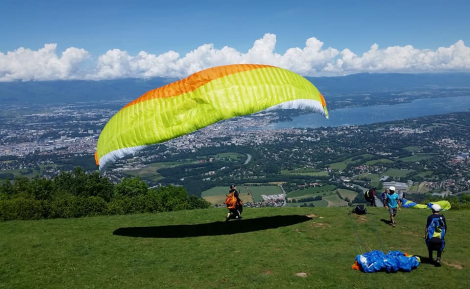
The view over Geneva from just over the French border
Networking and more networking
A major component of #ECSA2108 was strengthening existing relationships and growing new ones. From a NZ perspective, i.e. a small isolated country with a small population (4.7 mil) cementing our presence in the international citizen science space and with associations (ACSA, ECSA, CSA and the fledgling CitSciAsia and Swedish initiative) is critical. A practical outcome is avoiding duplication: sharing learnings and building on/adapting existing resources. A wider outcome is being part of a dynamic and evolving community of practice.

Reblogged this on Po Ve Sham – Muki Haklay's personal blog and commented:
Another excellent summary of the ECSA 2018 conference from Monica Peters, who always adds the New Zealand perspective and help to contextualised the issues that are covered in the conference…
LikeLike
Pingback: #ECSA2018 – BioBlitz evaluation workshop | monicalogues·
Pingback: #WCMT Citizen Science research trip: ECSA, German #citizenscience platforms and networks | monicalogues·